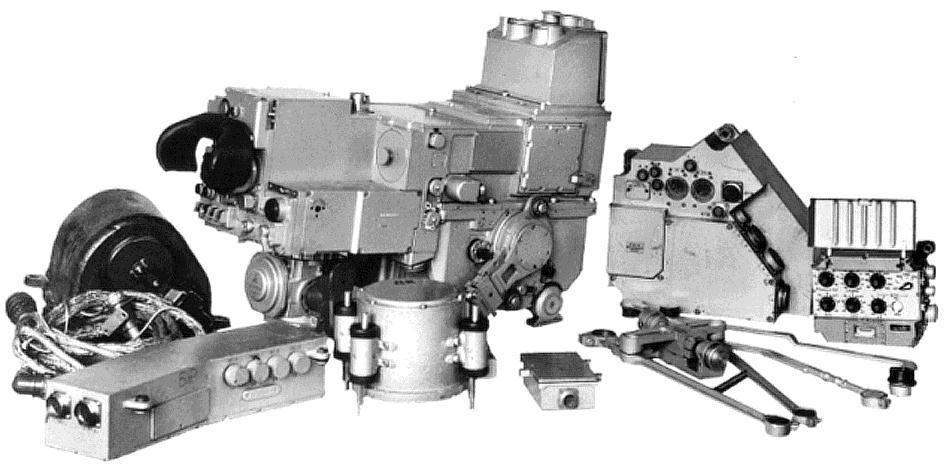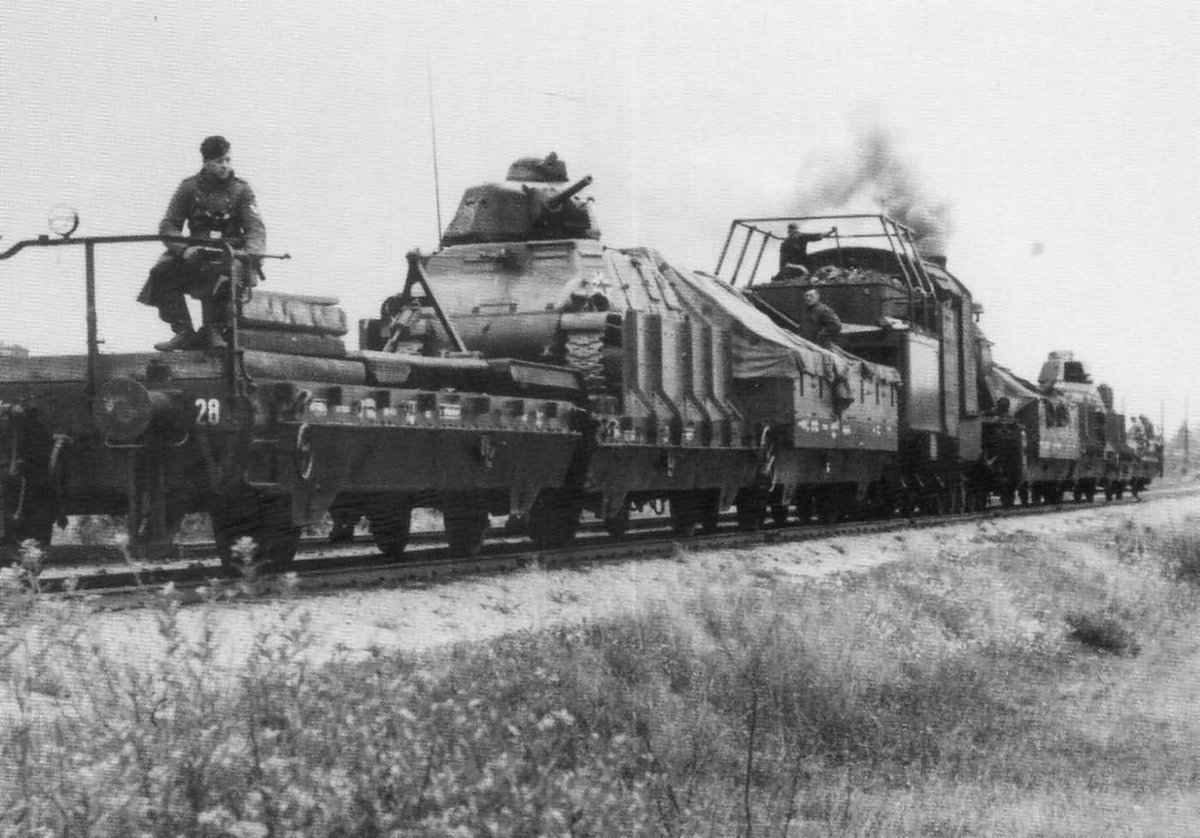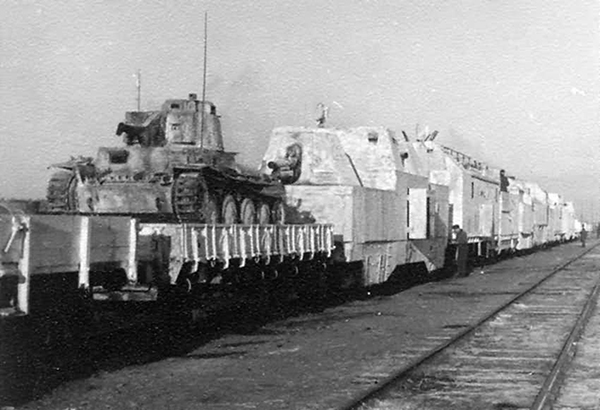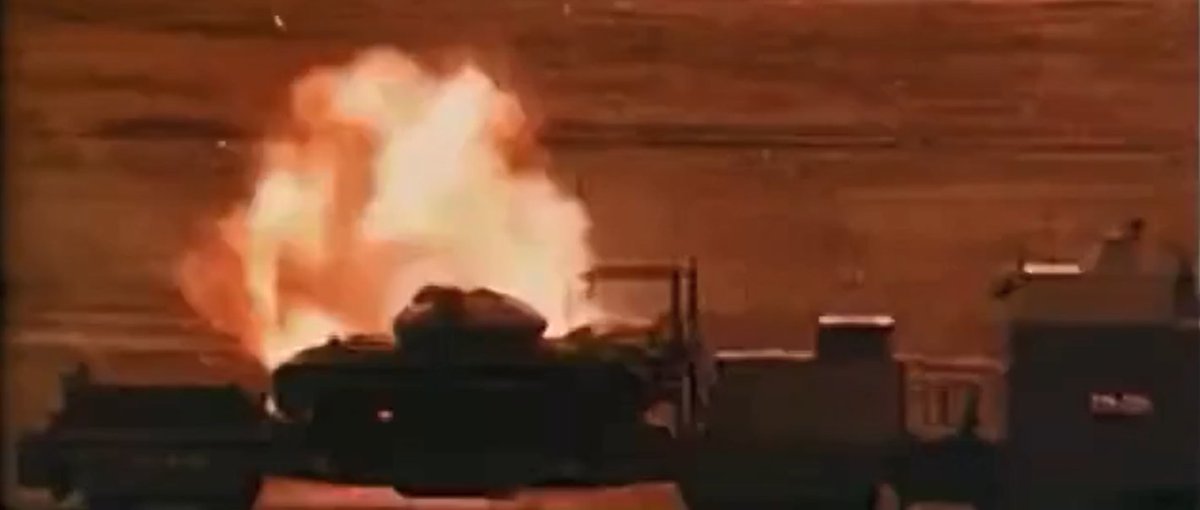(2/20) Prior to the T-64, postwar Soviet medium tanks relied on telescopic articulated (телескопический шарнирный, TSh) sights with stadia markings, like the TSh2B-41U on the T-62, descended from the Tiger's TZF 12a sight.
https://t.co/uZcI4RG59Ubtvt.info/3attackdefense…



https://t.co/uZcI4RG59Ubtvt.info/3attackdefense…



(3/20) The original T-64 (left) was the first Soviet medium tank to use a coincidence rangefinder, or танковый прицел-дальномер ('tank sight-rangefinder', TPD) in Russian, the TPD-43B.
The T-64A (right) had the improved TPD-2-49, which was also used on the T-72 Ural and T-80.



The T-64A (right) had the improved TPD-2-49, which was also used on the T-72 Ural and T-80.



(4/20) Obtaining the range with these TPDs requires skill and concentration, with the gunner aligning images from the two lenses at each end of the bar. A ballistic computer will then adjust the sight for the range while compensating for tank movement.
(5/20) In the 1970s, Soviet tanks began using laser (or to use the Russian word, 'квантовый' — 'quantum') rangefinders. The first of these was the TPD-K1. It was fitted to late T-64As, T-72 Urals, and T-80s, as well as early T-72As. 

(6/20) It is also the standard equipment of Warsaw Pact/export T-72M1s. The procedure for use is demonstrated here.
(7/20) The TPDs are not considered a 'true' FCS (система управления огнём, SUO) because they do not have any lead-compensation built in and require a lot of manual input.
The TPD-K1 adjusts the reticle, not the gun, which the gunner must then compensate for manually.


The TPD-K1 adjusts the reticle, not the gun, which the gunner must then compensate for manually.


(8/20) The first Soviet tank with a 'true' SUO was the T-64B with its 1A33 Ob SUO, which entered service in 1976.
https://t.co/IvLYfAhM9ebtvt.info/3attackdefense…

https://t.co/IvLYfAhM9ebtvt.info/3attackdefense…

(9/20) The Ob SUO consists of many components, including the 1G42 laser rangefinder/sight, 1G43 shot resolution block, 1V517M analogue ballistic computer, 1B11 crosswind sensor, 1B14 roll sensor, 2E26M horizontal stabiliser and turret traverse drive, and many other components. 
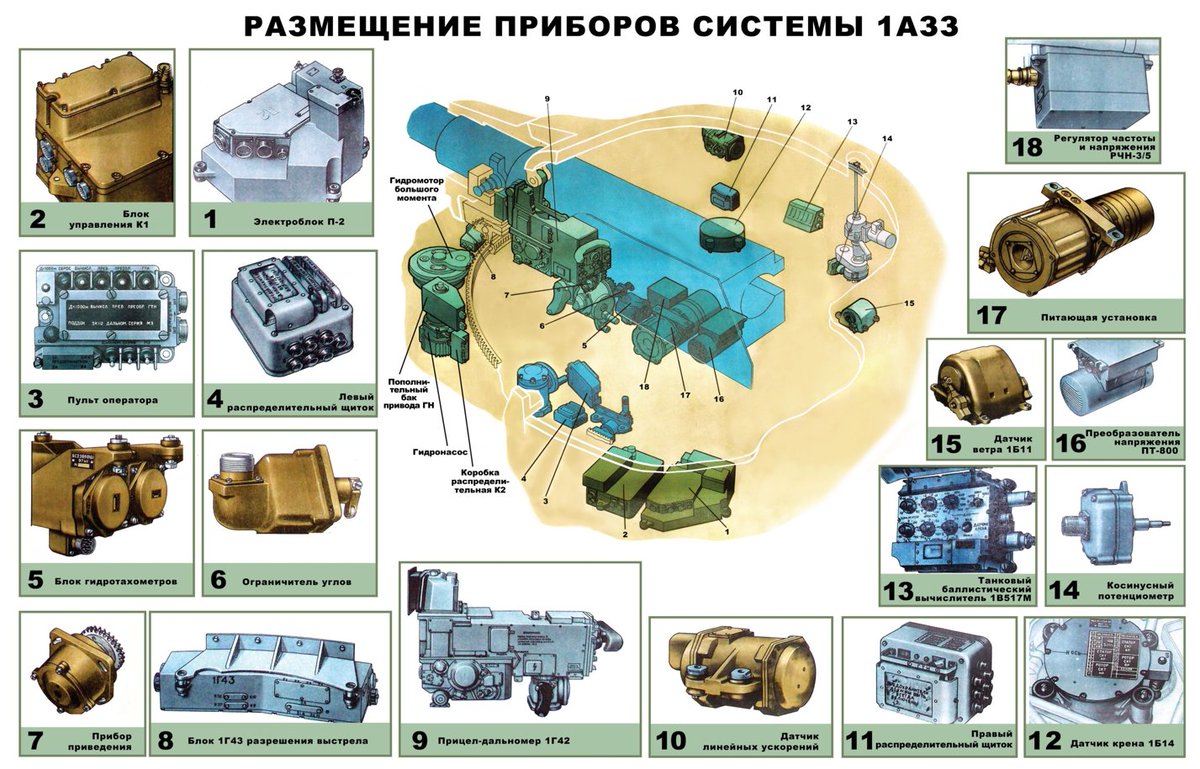
(10/20) The 1G42 rangefinder sight boasts not only independent vertical stabilisation like the TPD-K1, but also independent horizontal stabilisation.




(11/20) The Ob has fully automatic superelevation and lead compensation. Once the gunner has lased his target, all the gunner has to do is keep his aimpoint on the 1G42 on target and fire the gun. The Ob SUO will do the rest.
(12/20) This makes it superior to earlier TPDs, allowing the gunner to react faster and with less chance of errors.
A 1973 test between a T-62, T-64A with TPD-2-49, and T-64A with Ob SUO showed a marked improvement in engagement times for the latter.
https://t.co/umouzIxq07btvt.info/5library/vbtt_…


A 1973 test between a T-62, T-64A with TPD-2-49, and T-64A with Ob SUO showed a marked improvement in engagement times for the latter.
https://t.co/umouzIxq07btvt.info/5library/vbtt_…


(13/20) After initial development problems (including a refusal to fire shots at temperatures below -50 C), the Ob was accepted for service in 1976.
On the T-64B, it forms a part of the Ob-Kobra complex that allows firing of the 9M112 Kobra GLATGM. But that's another story.
On the T-64B, it forms a part of the Ob-Kobra complex that allows firing of the 9M112 Kobra GLATGM. But that's another story.

(14/20) The Ob was also quickly adopted for the T-80B in 1978, because it did not make any sense for the (much) more expensive T-80 to have a worse fire control system than the T-64. 

(15/20) The T-72 never received the Ob SUO, likely because it would have rendered the whole tank pointless as a cheaper alternative to the T-64/80 due to the high cost of the Ob. 

(16/20) Instead, in 1982 the T-72A was given the 1A40 SUO. This is essentially the TPD-K1 with an added module known as the устройства выработки боковых упреждений ('lateral lead generation device', UVBU).
https://t.co/xAraE0RC6Rthesovietarmourblog.blogspot.com/2015/05/t-72-s…

https://t.co/xAraE0RC6Rthesovietarmourblog.blogspot.com/2015/05/t-72-s…

(17/20) The TPD-K1, and therefore 1A40, do not have independent horizontal stabilisation, it is impossible to incorporate automatic lead into them.
The UVBU calculates the required lead angle and displays it to the gunner, who compensates manually based on the markings.
The UVBU calculates the required lead angle and displays it to the gunner, who compensates manually based on the markings.

(18/20) T-72s would not get a 'proper' fully automated SUO until the introduction of the Sosna-U multispectral sight in the T-72B3. 

(19/20) Sosna-U also has automatic target tracking, although how well this feature works is unknown.
(20/20) The Ob itself was eventually replaced by the 1A45 Irtysh, which is used on the T-80U, T-90 (pre-M), and T-84. Irtysh includes fire controls for the commander, but that's another story... 
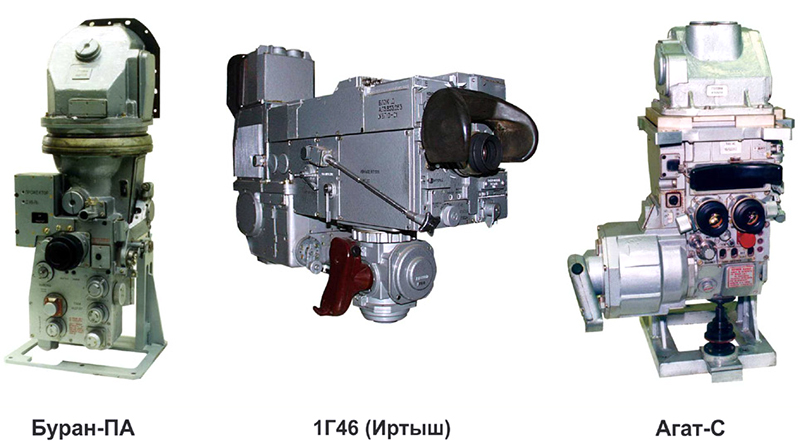
Oh, 'Ob' and 'Irtysh' are just the names of rivers, if you are curious.
en.wikipedia.org/wiki/Ob_(river)
en.wikipedia.org/wiki/Ob_(river)
@NickyTea22 Some older T-72s and T-80s used the same TPN1, later on they got the slightly improved TPN3.
• • •
Missing some Tweet in this thread? You can try to
force a refresh

